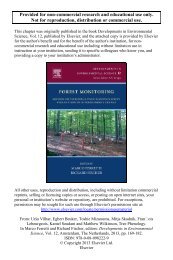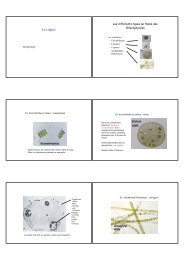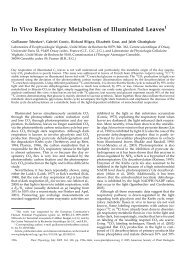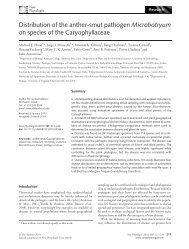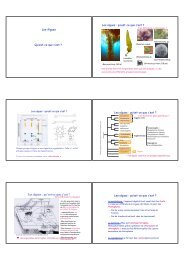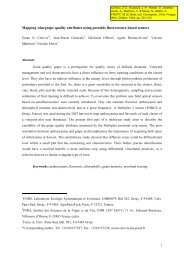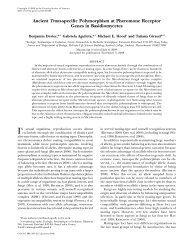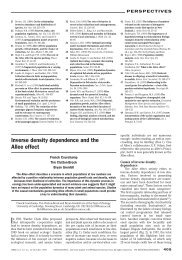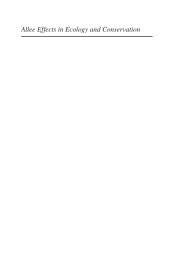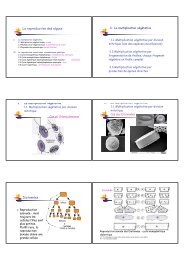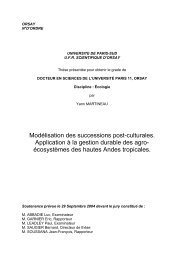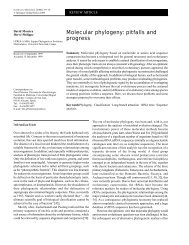Premiers - Outil de Suivi des Contrats
Premiers - Outil de Suivi des Contrats
Premiers - Outil de Suivi des Contrats
You also want an ePaper? Increase the reach of your titles
YUMPU automatically turns print PDFs into web optimized ePapers that Google loves.
Annexe III<br />
_____________________________________________<br />
suggesting a genetic and heritable component that permit natural selection to act on this<br />
phenotypic trait (Stearns, 1992). So, our results support a potential influence of hydric<br />
conditions within the nest on quality (i.e. mass) of hatchlings that may affect individual<br />
fitness.<br />
However, we also found that significant effects of moisture substrate on juvenile mass<br />
disappeared approximately after one year of life (Table 2.4). Thus, hypothesis that larger mass<br />
at hatching would confer faster growth on hatchlings, regardless of the source of differences<br />
in mass at hatching was refuted (Brooks et al., 1991). We didn’t either <strong>de</strong>tect an effect of<br />
initial egg mass or clutch on yearling mass (Table 2.4). On the other hand, we <strong>de</strong>tected a high<br />
and significant effect of offspring sex, with females heavier than males (Figure 4). Hydric<br />
conditions within the nest may thus have only short-term effects and may influence juvenile<br />
quality only in the early stage of life.<br />
CONCLUSION<br />
Mortality of embryos in Trachemys scripta elegans, a turtle with flexible-shelled eggs, was<br />
not affected by the range and change of moisture levels used in our experiment. However, we<br />
performed this experiment un<strong>de</strong>r constant incubation temperature, while temperature and<br />
moisture probably exert a combined effect on eggs and embryos. Other studies confounding<br />
effects of temperature and water potential. Finally, few authors investigated the range of<br />
substrate moisture in association with nest temperature that might influence eggs and resultant<br />
hatchlings, as well as fluctuating water potentials (Gutzke et al., 1986; Tucker et al., 1997;<br />
Tucker et al., 1998; Ji et al., 1999; Hewavisenthi et al., 2001; Tucker, Paukstis & Janzen,<br />
2001).<br />
As expected, incubation length and hatchling mass were negatively related with time on dry<br />
substrate, thus hydric conditions may affect hatchling quality. However, moisture substrate<br />
17



